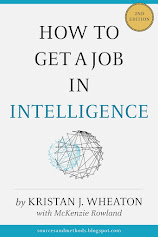The American Association of Colleges and Universities recently released a report titled "The Quality Imperative." Central to this report is the chart below on what employers want from colleges (and, by extension, from college graduates):
What struck me (and what also struck the authors of the report) is the duality of the data: Employers want more emphasis on science and technology and on global issues. They want more emphasis on complex problem solving and on ethical decision making.
The authors of the report seem to be making the case that we no longer live in a world with an ivory tower at one end of the spectrum and a trade union at the other. We now live in a world where theory and application are inextricably bound together.
It is difficult, sometimes, for students to understand this -- that it is a broad appreciation of the world combined with concrete skills that will serve them best in a future where it is difficult to know what is important now, much less what will be important next. It is good to see that employers are well-aware of the way the world has changed and of the broad range of skills necessary to deal with it.
Friday, February 5, 2010
What Employers Want (AACU)
Posted by
Kristan J. Wheaton
at
9:38 AM
4
comments
![]()
Labels: Colleges and Universities, Decision making, intelligence, Problem solving
Monday, February 1, 2010
Of Form And Content (An Experiment In Communicating The Results Of Analysis)
Imagine a brilliant piece of intelligence analysis -- well-researched, well-written and actionable. Now imagine that same report written in an 8 point Gothic font over multiple pages with half inch margins. No title, no paragraphs, no sub-sections, no indentations; just a single block of text. Would you read it? Would anyone else?
Point 1: Form matters. How we say something is often as important, if not more important, than what we say.
__________________
Now, take a look at this video:
It is a fake. It was originally created with some off the shelf software by a CGI artist and then modified by someone to look like a NASA video. Here is the original:
You have to go to YouTube to see the dates (the original was loaded in February 2009 and the fake modified and uploaded in November, 2009).
The most distressing thing about the two videos, however, is not the fakery. It is the number of views. Again, you have to go to the YouTube sites to confirm this but the original has only 23,000 or so views while the fake has over 150,000 views.
Furthermore, cleverly modified videos are not the only way to twist, spin, modify and deceive. Check out FactCheck.org's Whoppers of 2009 for other ways that people have cleverly manipulated the form of the message to lie to us.
Which leads to Point 2: It is getting easier and easier to lie with form.
___________________
Richards Heuer pointed out in his classic, The Psychology of Intelligence Analysis, that "once information rings a bell, the bell cannot be unrung." He was capturing a phenomena that is well known to psychologists: People continue to act as if a piece of information were true even after the piece of information has been proven to be false.
Over and over again, people have been put in experiments that make them falsely believe that they have a capacity to do something -- distinguish the effect of risk-taking and success as a firefighter, for example -- that they do not have. Even after they have been shown conclusive proof that the experiment has been manipulated to give the subjects the impression that they have an ability they do not, in fact, have, these subjects continue to act as if the original information were correct.
This persistence of the impression of accuracy, even in the face of overwhelming evidence to the contrary, has recently been shown to exist in more realistic experiments that include statements made by politicians.
All that is bad enough but when you combine this psychological effect with the power of visualization, you get an absolutely scary combination. Check this video out:
Which leads to Point 3: Lies persist and visual lies likely persist more strongly than textual lies.
______________________
So what does this all have to do with communicating the results of intelligence analysis?
The US national security intelligence community has been accused of trying to sell its intelligence. The 2005 WMD Commission report accused the intelligence community of this with regards to the President's Daily Brief (PDB): "The daily reports seemed to be ‘selling’ intelligence—in order to keep its customers, or at least the First Customer, interested."
Luis Garicano and Richard Posner suggested that there were self-interested economic reasons for doing so, stating in 2005 that the PDB "has become the primary platform by which intelligence agencies seek to advertise their products in competition with each other..."
Which leads to Point 4: Good intelligence doesn't "sell" its products.
__________________________
When I took my first job as an analyst (back in the 80's...), I didn't make my own slides. PowerPoint was deemed to be too complicated and tricky. It required a specialist, trained in its vagaries, to generate the slides necessary to brief the decisionmakers who pulled my strings.
That did not last long. Very quickly it went from rare to common to expected that analysts would be able to generate their own slides. What's more, today analysts are increasingly being asked to create visuals to supplement or replace the results of what was previously text-based analysis.
Yet, analysts get very little training in appropriate ways to visualize information and virtually no training in how not to lie or mislead with colors and graphics, how to spot photoshopped pictures or fake video, or how to ensure that the form is as objective as the content.
Which leads to My Question: How do we know when we are lying (or misleading) with the form of our intelligence products?
________________________
It seems to me that we spend a good bit of time analyzing text for evidence of bias or puffery or misleading statements. In virtually every intelligence organization of any size, there is a quality control process to ensure that the content -- the words going out the door -- conform to the standards of the agency.
Within the US national security intelligence community these standards are laid out in ICD 203 and I suspect that other intelligence agencies and organizations worldwide have something similar.
But who makes sure the same thing is true for the form?
All of this is a very long precis to an exercise I do in my Intelligence Communications class. In the vast majority of the exercises and assignments in that class, I ask students to focus on the elements of good intelligence communication: Bottom-line up front estimates, concision, clarity, decisionmaker focus, accuracy, etc.
In one exercise, though, I ask them to take a written report and re-imagine it as a primarily visual product. I task them to keep all the elements of a good intelligence product but to visualize those elements rather than put them in print.
Over the years, I have received some wonderfully innovative products. This year was no different. One of the products stood out, however. Nimalan Paul, using online software from Xtranormal.com, created an amusing and compelling animated video that contains virtually exactly the same content as the written product on the same topic.
Before you see the video, I will share the written version of the report with you. It follows the generic form guidance that we use here at Mercyhurst in our intelligence communications classes for written products:
Nimalan Paul, Intelligence Communications 14 January 2010
Here is the animated version of the same report:
Which report is better at communicating the results of the analysis? One of our grad students actually did a study on this a number of years ago. His findings showed that if you are above a "certain age", the text document is the best at communicating but that if you are below that certain age, then the animation is likely to be more effective.
Beyond the age distinction, what else makes one format better than the other? Is it all personal preference? Is one more "honest" than the other or is one just more traditional?
Finally, if one of these forms is more honest than the other, shouldn't we be teaching how to recognize that difference?
Leave your thoughts in the comments...
Posted by
Kristan J. Wheaton
at
9:19 AM
6
comments
![]()
Labels: Government, intelligence, Intelligence agency, intelligence analysis, national security, Richard Posner, Richards Heuer, visual analysis, visualizing intelligence, YouTube
Subscribe to:
Posts (Atom)




